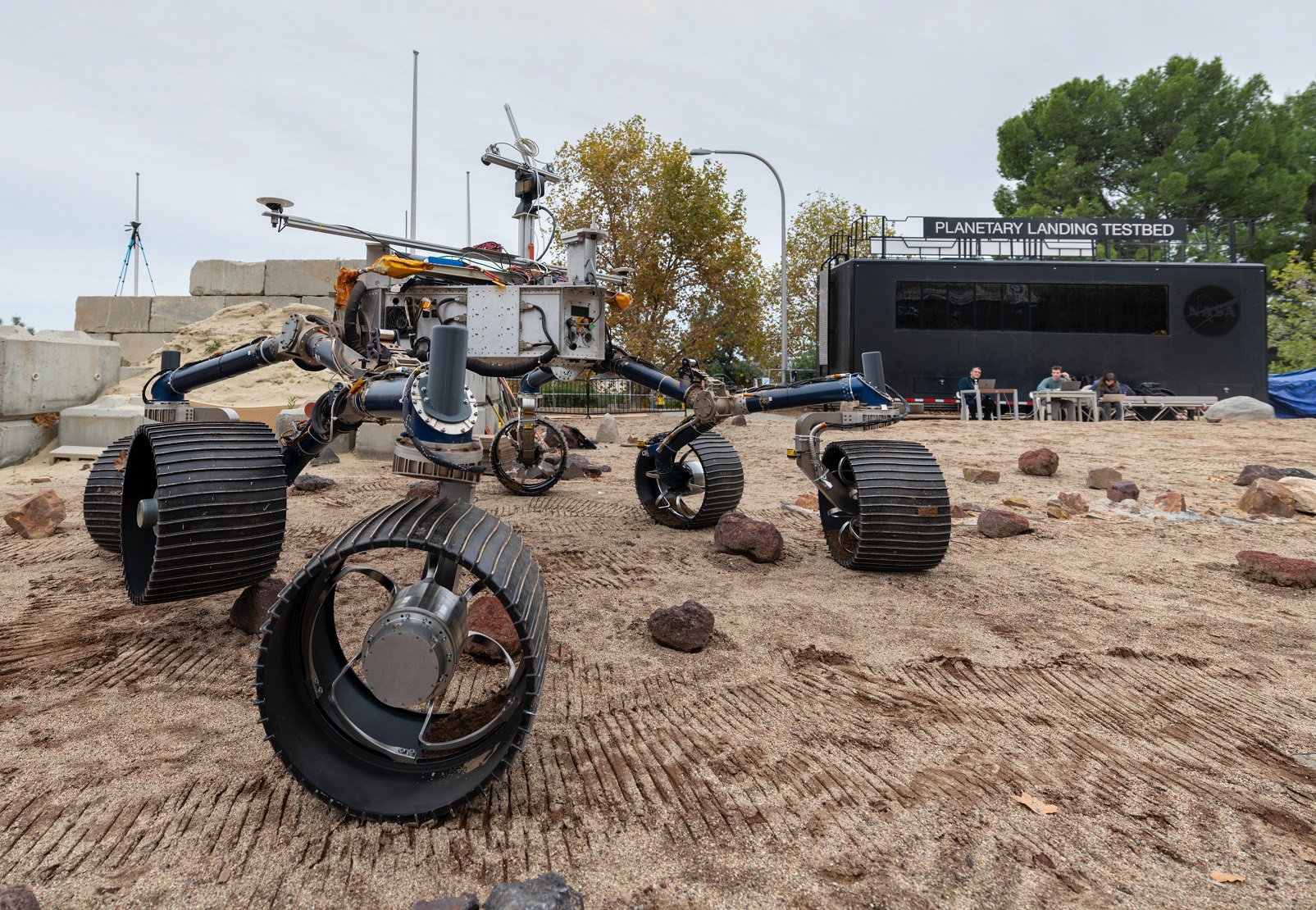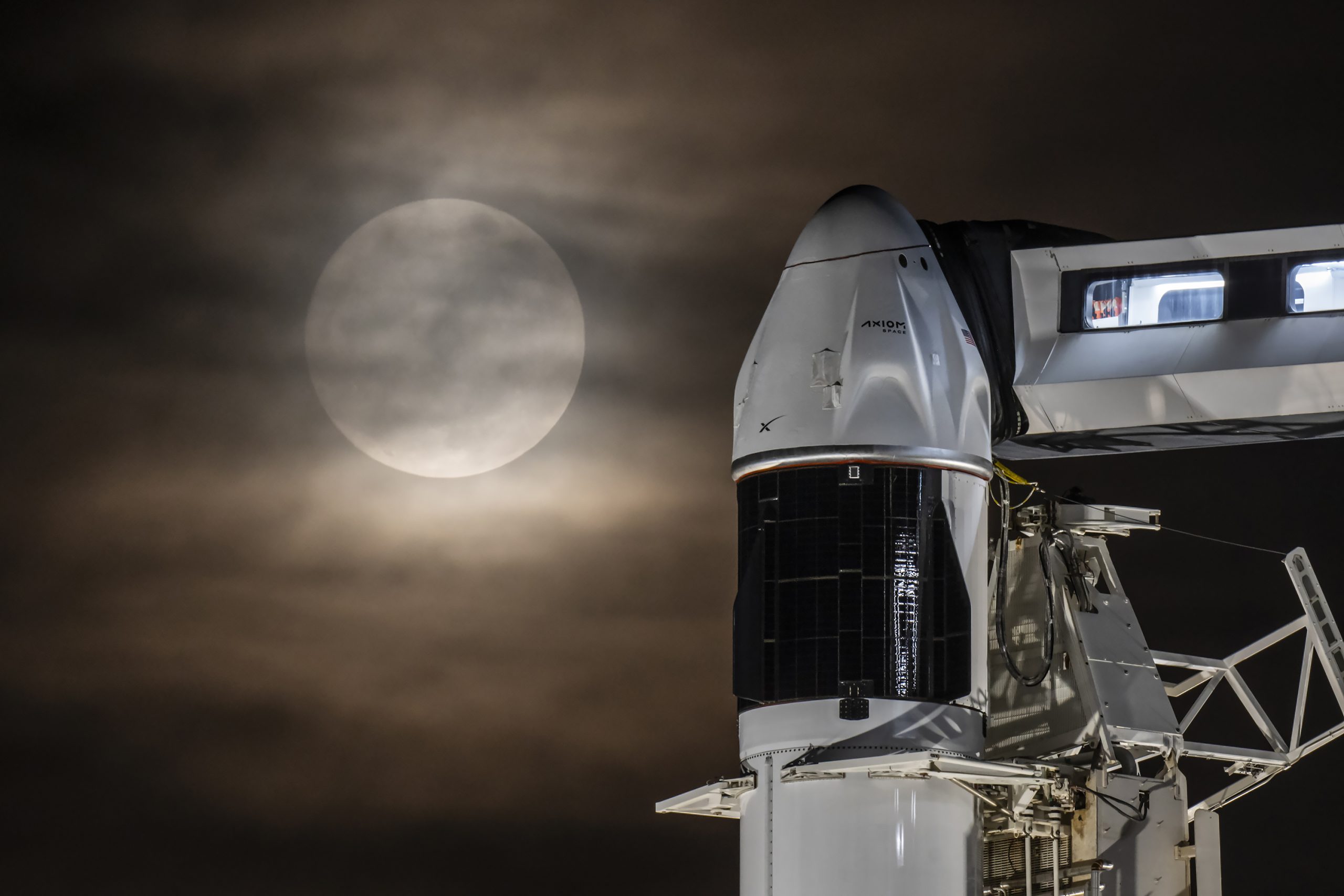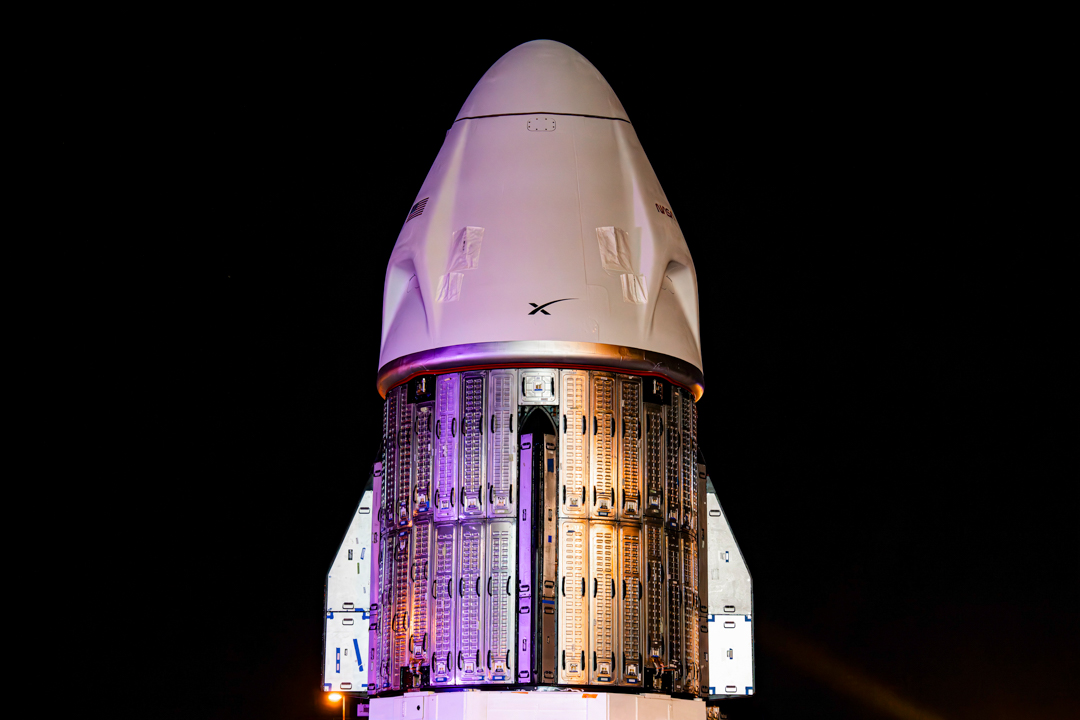

Space
Watch NASA’s Mars 2020 Rover go for a test drive in preparation for landing on Martian soil
NASA engineers witnessed their newest Mars rover take its first steps in preparation for its next mission that will search for fossilized remains of ancient life on the red planet.
The test took place inside the Spacecraft Assembly Facility clean room at NASA’s Jet Propulsion Laboratory in Pasadena, California. Engineers clad in white bunny suits—special cleanroom attire worn in order to keep the rover’s delicate instruments very, very clean—watched the yet-to-be-named rover inch forward as part of the crucial pre-flight test, which lasted just over 10-hours.
“Mars 2020 has earned its driver’s license,” Rich Rieber, the lead mobility systems engineer for Mars 2020, said in a news release. “The test unambiguously proved that the rover can operate under its own weight and demonstrated many of the autonomous-navigation functions for the first time. This is a major milestone for Mars 2020.”
During the test, NASA engineers noticed no problems, as the six-wheeled rover successfully performed all its required tasks: it rolled forward and backward and even pirouetted. According to NASA, the rover’s systems, all working in concert, enabled it to steer, turn and drive with ease.
The testing of the vehicle’s autonomous navigation system went well. Since these systems performed perfectly under Earth’s gravity, engineers expect them to perform just as well under Mars’ gravity, which is only 38% of what we experience on Earth.
The test went so well that NASA says the “next time the Mars 2020 rover drives, it will be rolling over Martian soil.” The Mars 2020 rover is scheduled to launch in July 2020, followed by a landing in Jezero Crater on February 18, 2021.
“A rover needs to rove, and Mars 2020 did that,” John McNamee, project manager for Mars 2020, said in a statement. “We can’t wait to put some red Martian dirt under its wheels.”
During its initial test drive, the rover crept forward in small, 3-feet ( 1-meter) increments, enabling the engineers to properly assess its movement and steering abilities. The rover also drove over small ramps designed to simulate uneven Martian terrain.
Engineers were also able to collect data from the vehicle’s Radar Imager for Mars’ Subsurface Experiment (RIMFAX)—an instrument that uses radar waves to scan the ground below the rover. Depending on the terrain, once on Mars, RIMFAX will penetrate the ground, probing the red planet’s subsurface to depths of more than 30-feet (or 10-meters).

Curiosity, the Mars 2020 rover’s predecessor currently roaming around on Mars, is predominantly commanded by people back on Earth. However, the rover does have the ability to autonomously choose where to fire its laser spectrometer. As part of its onboard science arsenal, the instrument—called ChemCam—is designed to analyze the chemical composition of nearby rocks and soil.
Mars 2020, on the other hand, will be more independent than any of its predecessors. Equipped with advanced auto-navigation software, the rover will drive with the help of a dedicated onboard computer operating on data collected from the vehicle’s high-resolution, wide-field color cameras.
NASA engineers estimate that the rover will travel an average of 650 feet (200 meters) per day. For comparison, Curiosity’s current distance record for a single day is 702 feet (214 meters), although that’s not typical. The Mars 2020 rover will also be sporting more durable wheels. Curiosity’s wheels are visibly worn after seven years on the Martian surface; engineers hope Mars 2020’s wheels will hold up better.

Once on Mars, the rover will land at Jezero Crater—a former lake bed, rich in mineral deposits known for preserving microfossils here on Earth. In this crater, the rover will search for any signs that life may have once existed on Mars.
While acting as a remote scientist, the rover will unlock clues about the planet’s climate and geology as well as collect samples that will be returned to Earth sometime in the future.
Following the loss of the Opportunity rover, Curiosity has been the sole robot roaming the Martian surface. That will change in 2021, but they won’t be the only ones.
They will be joined by another: The European Space Agency is teaming up with Russia to send their version of the Mars 2020 rover. The Rosalind Franklin ExoMars rover will arrive on Mars at a soon-to-be-announced location, in 2021.
News
SpaceX Ax-4 Mission prepares for ISS with new launch date
SpaceX, Axiom Space, and NASA set new launch date for the Ax-4 mission after addressing ISS & rocket concerns.

SpaceX is preparing for a new launch date for the Ax-4 mission to the International Space Station (ISS).
SpaceX, Axiom Space, and NASA addressed recent technical challenges and announced a new launch date of no earlier than Thursday, June 19, for the Ax-4 mission. The delay from June 12 allowed teams to assess repairs to small leaks in the ISS’s Zvezda service module.
NASA and Roscosmos have been monitoring leaks in the Zvezda module’s aft (back) segment for years. However, stable pressure could also result from air flowing across the hatch seal from the central station. As NASA and its partners adapt launch schedules to ensure station safety, adjustments are routine.
“Following the most recent repair, pressure in the transfer tunnel has been stable,” a source noted, suggesting the leaks may be sealed.
“By changing pressure in the transfer tunnel and monitoring over time, teams are evaluating the condition of the transfer tunnel and the hatch seal between the space station and the back of Zvezda,” the source added.
SpaceX has also resolved a liquid oxygen leak found during post-static fire inspections of the Falcon 9 rocket, completing a wet dress rehearsal to confirm readiness. The Ax-4 mission is Axiom Space’s fourth private astronaut trip to the ISS. It will launch from NASA’s Kennedy Space Center in Florida on a Falcon 9 rocket with a new Crew Dragon capsule.
“This is the first flight for this Dragon capsule, and it’s carrying an international crew—a perfect debut. We’ve upgraded storage, propulsion components, and the seat lash design for improved reliability and reuse,” said William Gerstenmaier, SpaceX’s vice president of build and flight reliability.
The Ax-4 mission crew is led by Peggy Whitson, Axiom Space’s director of human spaceflight and former NASA astronaut. The Ax-4 crew includes ISRO astronaut Shubhanshu Shukla as pilot, alongside mission specialists Sławosz Uznański-Wiśniewski from Poland and Tibor Kapu from Hungary. The international team underscores Axiom’s commitment to global collaboration.
The Ax-4 mission will advance scientific research during its ISS stay, supporting Axiom’s goal of building a commercial space station. As teams finalize preparations, the mission’s updated launch date and technical resolutions position it to strengthen private space exploration’s role in advancing space-based innovation.
News
Starlink India launch gains traction with telecom license approval
Starlink just secured its telecom license in India! High-speed satellite internet could go live in 2 months.

Starlink India’s launch cleared a key regulatory hurdle after securing a long-awaited license from the country’s telecom ministry. Starlink’s license approval in India paves the way for commercial operations to begin, marking a significant milestone after a three-year wait.
The Department of Telecommunications granted Starlink a Global Mobile Personal Communication by Satellite (GMPCS) license, enabling it to roll out its high-speed internet service. Local reports hinted that Starlink plans to launch its services within the next two months. Starlink India’s services are expected to be priced at ₹3,000 per month for unlimited data. Starlink service would require a ₹33,000 hardware kit, including a dish and router.
“Starlink is finally ready to enter the Indian market,” sources familiar with the rollout plans confirmed, noting a one-month free trial for new users.
Starlink’s low-Earth orbit satellite network promises low-latency, high-speed internet that is ideal for rural India, border areas, and hilly terrains. With over 7,000 satellites in orbit and millions of global users, Starlink aims to bridge India’s digital divide, especially in areas with limited traditional broadband.
Starlink has forged distribution partnerships with Indian telecom giants Reliance Jio and Bharti Airtel to streamline deployment and retail logistics. However, the company still awaits spectrum allocation and final clearances from India’s space regulator, IN-SPACe, and national security agencies before its full launch, expected before August 2025.
India’s satellite internet market is becoming increasingly competitive, with Starlink joining rivals like OneWeb and Jio Satellite Communications. While Starlink positions itself as a premium offering, its entry has sparked debate among domestic telecom operators over spectrum pricing.
Local reports noted that other players in the industry have raised concerns over the lower regulatory fees proposed for satellite firms compared to terrestrial operators, highlighting tensions in the sector.
Starlink India’s launch represents a transformative step toward expanding internet access in one of the world’s largest markets. Starlink could redefine connectivity for millions in underserved regions by leveraging its advanced satellite technology and strategic partnerships. As the company navigates remaining regulatory steps, its timely rollout could set a new standard for satellite internet in India, intensifying competition and driving innovation in the telecom landscape.
Elon Musk
SpaceX to decommission Dragon spacecraft in response to Pres. Trump war of words with Elon Musk
Elon Musk says SpaceX will decommission Dragon as a result of President Trump’s threat to end his subsidies and government contracts.

SpaceX will decommission its Dragon spacecraft in response to the intense war of words that President Trump and CEO Elon Musk have entered on various social media platforms today.
President Trump and Musk, who was once considered a right-hand man to Trump, have entered a vicious war of words on Thursday. The issues stem from Musk’s disagreement with the “Big Beautiful Bill,” which will increase the U.S. federal deficit, the Tesla and SpaceX frontman says.
How Tesla could benefit from the ‘Big Beautiful Bill’ that axes EV subsidies
The insults and threats have been brutal, as Trump has said he doesn’t know if he’ll respect Musk again, and Musk has even stated that the President would not have won the election in November if it were not for him.
President Trump then said later in the day that:
“The easiest way to save money in our Budget, Billions and Billions of Dollars, is to terminate Elon’s Government Subsidies and Contracts. I was always surprised that Biden didn’t do it!”
Musk’s response was simple: he will decommission the SpaceX capsule responsible for transporting crew and cargo to the International Space Station (ISS): Dragon.
🚨 Elon says Dragon will be decommissioned immediately due to President Trump’s threats to terminate SpaceX’s government contracts https://t.co/XNB0LflZIy
— TESLARATI (@Teslarati) June 5, 2025
Dragon has completed 51 missions, 46 of which have been to the ISS. It is capable of carrying up to 7 passengers to and from Earth’s orbit. It is the only spacecraft that is capable of returning vast amounts of cargo to Earth. It is also the first private spacecraft to take humans to the ISS.
The most notable mission Dragon completed is one of its most recent, as SpaceX brought NASA astronauts Butch Wilmore and Suni Williams back to Earth after being stranded at the ISS by a Boeing Starliner capsule.
SpaceX’s reluctance to participate in federally funded projects may put the government in a strange position. It will look to bring Boeing back in to take a majority of these projects, but there might be some reluctance based on the Starliner mishap with Wilmore and Williams.
SpaceX bails out Boeing and employees are reportedly ‘humiliated’
-

 Elon Musk2 weeks ago
Elon Musk2 weeks agoTesla investors will be shocked by Jim Cramer’s latest assessment
-

 Elon Musk2 days ago
Elon Musk2 days agoxAI launches Grok 4 with new $300/month SuperGrok Heavy subscription
-

 Elon Musk5 days ago
Elon Musk5 days agoElon Musk confirms Grok 4 launch on July 9 with livestream event
-

 News1 week ago
News1 week agoTesla Model 3 ranks as the safest new car in Europe for 2025, per Euro NCAP tests
-

 Elon Musk2 weeks ago
Elon Musk2 weeks agoA Tesla just delivered itself to a customer autonomously, Elon Musk confirms
-

 Elon Musk1 week ago
Elon Musk1 week agoxAI’s Memphis data center receives air permit despite community criticism
-

 News2 weeks ago
News2 weeks agoXiaomi CEO congratulates Tesla on first FSD delivery: “We have to continue learning!”
-

 Elon Musk2 weeks ago
Elon Musk2 weeks agoTesla scrambles after Musk sidekick exit, CEO takes over sales

















